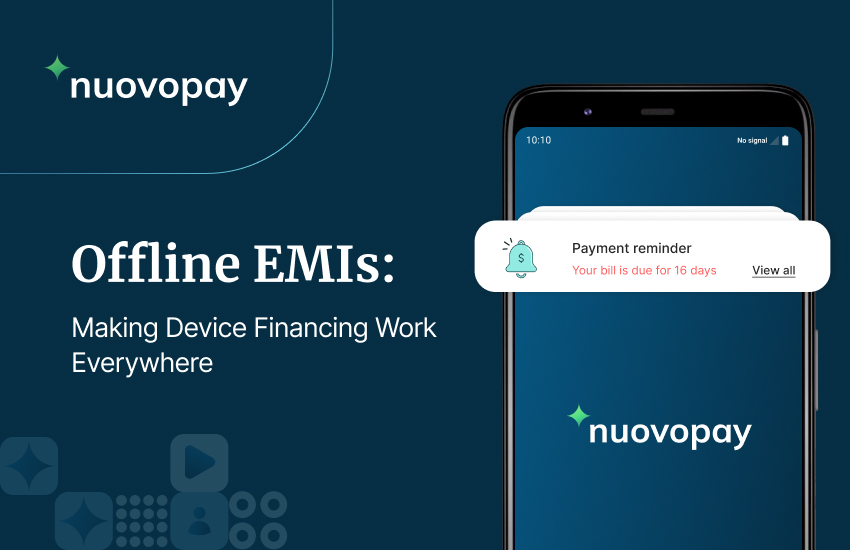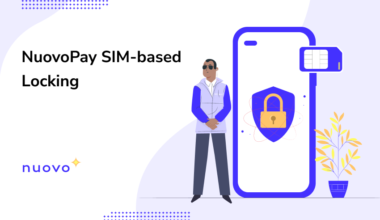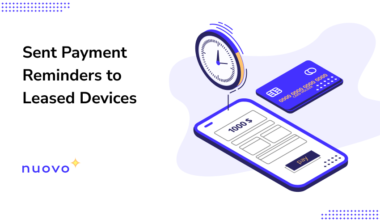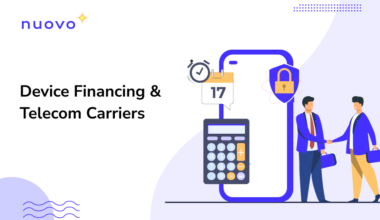Internet is not everywhere, but the demand for smartphones is.
Approximately one-third of the world’s population, or 2.6 billion people, still lack internet access.[1]
From rural India to remote parts of Africa and Southeast Asia, millions of people want access to devices. But there’s a problem. Most of them don’t have a steady internet connection, and traditional EMI (Equated Monthly Installment) models depend on it.

So, how do you finance a smartphone for someone who can’t stay online?
That’s exactly where offline-first EMI models come into play and where NuovoPay is already making a difference by keeping repayments on track.
Why standard EMI models don’t work offline
The standard EMI playbook makes several assumptions. For example:
- The user is always online
- Reminders and payment tracking are done over data
- Devices can be locked remotely if needed
But in many offline regions, these assumptions don’t hold. Borrowers may:
- Use prepaid SIMs with limited or no data
- Swap SIMs frequently
- Travel in and out of network coverage zones
- Miss payment reminders because there’s no internet
All this increases default risk and makes it harder for telcos, MFIs, and retailers to protect financed devices.
The real challenges in offline device financing
Let’s break it down.
1. No real-time visibility: You can’t track repayments or send push notifications. That removes basic EMI enforcement tools.
2. High default risk: When users know there’s no follow-up if they stop paying, motivation drops. Collection agents become the only fallback.
3. SIM churn and device resale: In prepaid markets, users can just switch SIMs or reset the phone. The financier loses control.
4. Cost of recovery: Physically retrieving a defaulted device in rural areas is expensive and rarely feasible.
Bottom line, financing devices offline without a solid fallback system is a non-starter.
What an offline-first EMI model needs to work
Building a plan for an offline model is all about doing things effectively.
Here’s what works:
SIM-based locking
The device is linked to a specific SIM. If the user swaps the SIM or removes it, the device locks automatically, no internet required.
Time-based access
Devices can be programmed to work for a fixed period (say, 30 days). If payment isn’t made by then, access is restricted, even offline.
SMS-triggered lock/unlock
Instead of needing data, commands can be sent via SMS. Devices respond even in 2G zones.
Offline usage logs
Data on device activity and usage is stored locally. It syncs with the server the moment the device connects, even briefly.
Agent or kiosk integration
In rural markets, agents can be given unlock tokens or a one-time code. Once payment is made offline, the device can be unlocked on the spot.
This approach flips the script. Instead of relying on the cloud, the device itself becomes the enforcement mechanism.
NuovoPay’s role in offline financing
NuovoPay is a Device Financing Risk Management (DFRM) platform designed for regions with patchy or limited internet access. It enables lenders and service providers to manage and secure financed devices, enforce payment-linked controls, and recover assets without relying on constant connectivity.
Here’s how it works:
Remote locking even without data
NuovoPay’s lock technology functions offline. If a payment is missed, the device locks automatically, even if the user isn’t online.
SIM binding
The platform ties the device to a specific SIM. If it’s removed or changed, NuovoPay enforces a lock, which protects prepaid bundles and stops SIM churn.
Scheduled access logic
Lenders can define exactly how long a device stays unlocked between payments. After that, it locks until the EMI is cleared.
SMS-based controls
Unlock, lock and reminders can be sent via SMS, so even in the lowest-bandwidth environments, the device keeps working.
Factory reset protection
Users can’t just reset the device and walk away. NuovoPay blocks factory resets, USB debugging, and installation of unapproved apps.
All of this happens without disturbing the user experience. The borrower is gently reminded and nudged toward repayment, but the financier stays in control, no matter the network condition.
Who’s using it and why
The value of offline EMI isn’t hypothetical. NuovoPay is already helping organizations:
1. Telcos – Operators bundle data + device financing. With SIM binding and locking, they reduce SIM churn and boost repayment compliance.
2. Retailers – Shops selling phones to underserved customers can now offer installments safely, knowing the device can’t be misused or sold if unpaid.
3. MFIs – Microfinance institutions offer digital devices as part of inclusion programs. With NuovoPay, they don’t have to worry about physical recovery or manual collection enforcement.
4. Governments and NGOs – In digital literacy and rural outreach programs, controlling device access ensures that donated or subsidized phones serve their intended purpose and stay with the right person.
The bigger picture: Financial access without internet
Offline EMI is a way to bring millions into the digital and financial ecosystem.
For telcos, it’s lower churn and higher average revenue per user. For lenders, it’s better repayment and lower risk. For users, it’s the chance to own a device, without a credit history or internet access.
NuovoPay enables all of that seamlessly, and without needing constant IT intervention.
Final Thoughts: It’s time to rethink EMI
In a world that’s “always online,” it’s easy to forget how many users aren’t. But they’re out there, billions of them. And they’re ready to pay, ready to own a device, and ready to connect.
The only thing missing is a device financing risk management model that works without the internet.
With NuovoPay being a DFRM platform, that’s no longer a barrier.
Reference:
1. ITU





